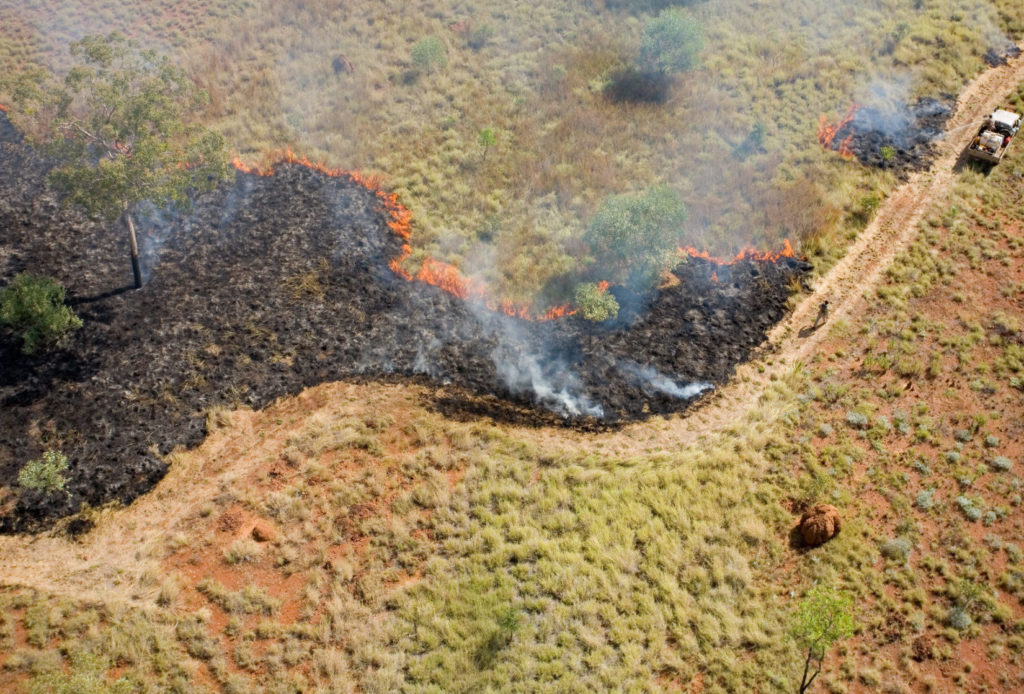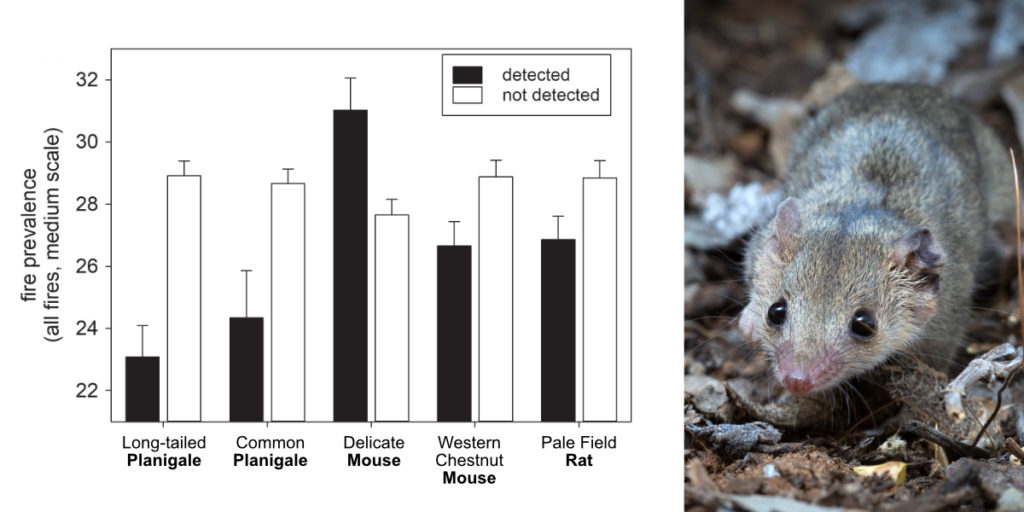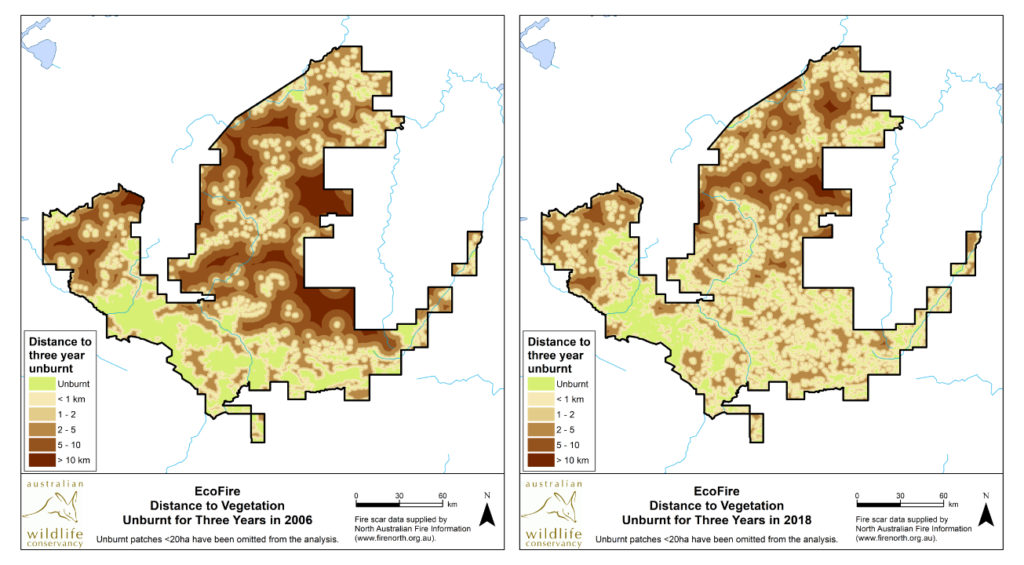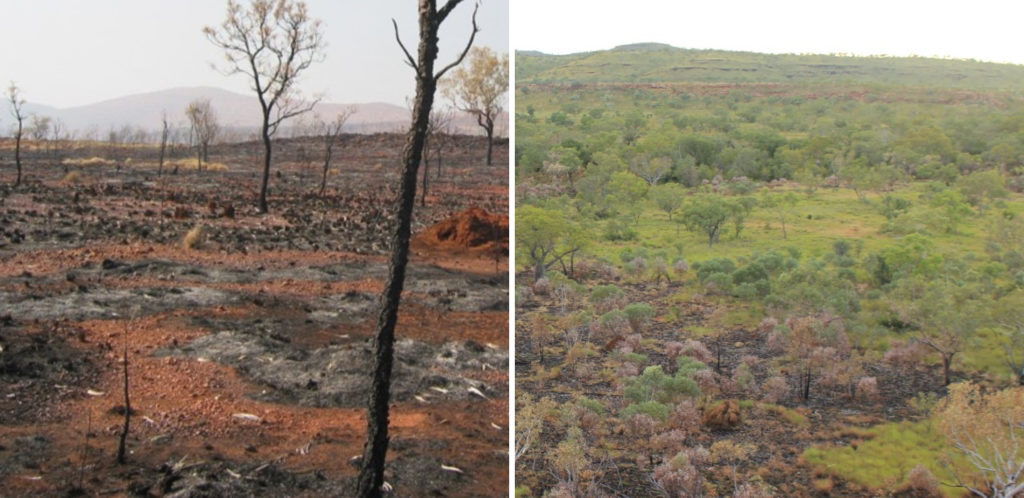By Andrew Morton, Senior Field Ecologist
AWC is committed to implementing its award-winning EcoFire program across millions of hectares of the Kimberley despite government funding being withdrawn.
This innovative fire management program was the first collaborative effort to control wildfires and limit the damage caused on a landscape scale in the Kimberley. AWC’s neighbours around Mornington came on board in 2007. The program rapidly grew into the largest and most successful non-government fire management program in the country.
Initially funded in part by a West Australian Government and Rangelands NRM grant, this vital program is now wholly funded by AWC through donations after the government withdrew its funding in 2019.
 © Nick Rains/AWC
© Nick Rains/AWC
Implementing Australia’s largest non-government fire management program
The central tenet behind EcoFire is to incorporate Indigenous land management practices with modern science and technology to deliver large-scale fire management that generates positive outcomes for threatened wildlife.
Historically, northern Australia’s Indigenous people would light fires throughout the year for various purposes, such as hunting (to flush game and provide fresh growth to attract grazing animals), clearing areas to allow transit, and burning to promote desirable plants or protect important cultural sites. Moving across the landscape, they created a mosaic of burnt and unburnt patches.
The onset of pastoralism in the 1880s, however, resulted in the dispossession of Aboriginal people from their traditional lands. By the mid-1970s, many Indigenous land management practices had ceased.
Without people in the landscape intentionally managing fire, the patterns quickly changed. The lack of traditional burning across the Kimberley resulted in the accumulation of fuel loads across much of the landscape. During the build-up season (typically October to December), ignitions such as lightning strikes, caused intense, large-scale wildfires to occur under hot, dry conditions. These high-intensity fires burnt vast areas (in the order of millions of hectares) every one to three years, killing trees and changing the composition of vegetation communities. The restructuring of the landscape in this way, coupled with introduced herbivores and the invasion of feral cats, have driven the decline of many small native animals. The changed fire regime has also reduced pastoral productivity.
EcoFire aims to reduce the size, intensity and frequency of fire by shifting its seasonality from the late dry season – when it is most damaging – to the cooler, early dry season when fire is mostly benign. This way, unburnt vegetation, especially long unburnt vegetation, is more accessible to the native animals that depend upon it for food and shelter. It helps small mammals to hide from feral cats and ensures that seeds from a range of grasses are available for animals, such as the nationally-threatened Gouldian Finch, that depend on that diversity.
This cross-tenure project incorporates AWC-managed sanctuaries, pastoral stations and Indigenous freehold land. All stakeholders are closely involved in the design and delivery of the prescribed burning program, which is massive. For example, throughout March and April 2019, AWC staff flew 26,052 kilometres in light aircraft and dropped 70,709 incendiaries.
 © Brad Leue/AWC
© Brad Leue/AWC
AWC’s team of land managers and field ecologists have been delivering EcoFire for 12 years across more than three million hectares of the central Kimberley. (AWC also delivers ecologically friendly fire management across a further three million hectares of the Kimberley, including at Yampi, and together with the Dambimangari Aboriginal Corporation).
Measuring success
The success of the project is measured against key fire metrics, such as the percentage of each property burnt in controlled burns compared to late season wildfires, and the distance between burnt and unburnt patches of vegetation. By applying objective metrics to measure the success of EcoFire, AWC can determine whether we are delivering a positive return on investment. The results are exceptional and show that since the inception of EcoFire there has been a clear shift in the seasonality of fires from the late dry season to the early dry season. Wildfires in the central Kimberley have been reduced by more than 50 per cent, delivering benefits for wildlife, for climate change and for pastoral productivity.

The distance between burnt and unburnt vegetation has also been reduced, making the latter more accessible to species like the endangered Northern Quoll and Gouldian Finch, improving their chances of survival. The impacts of managing fire are multiplied when feral herbivores are also removed, with the abundance of small mammal populations doubling in just a few years after destocking.
 © AWC
© AWC
Catalytic impact
The catalytic impact of EcoFire, the first and largest collaborative aerial burning program in the Kimberley, has also been significant. Several programs now use methodologies informed by EcoFire, and it has evolved from individuals managing fire on their own property – or not managing fires at all – to virtually the entire Kimberley implementing some sort of early dry-season fire management program.
EcoFire is strengthening the central Kimberley community, facilitating cooperation between land managers to tackle any wildfires that do start, and inspiring the inaugural Kimberley Regional Fire Training and Knowledge Exchange hosted by AWC at Mornington Wildlife Sanctuary in 2018.
How can you help?
For more than a decade, EcoFire has helped to change fire patterns and restore biodiversity across a vast area of the central Kimberley – important work which has previously been funded by the Western Australian Government. This year, however, all government support for this project has ceased, leaving us with a funding shortfall of $400,000.
We remain committed to implementing EcoFire – the Kimberley’s wildlife depends on it – but we desperately need support to be able to continue. Donations enable us to deliver EcoFire and protect the Kimberley’s endangered wildlife – at a cost of just $0.20 per hectare for one year!
Please consider making a tax-deductible gift, allowing us to continue delivering best-practice fire management in the Kimberley, building on the exceptional returns that this program generates for Australia’s threatened wildlife.
Support EcoFire to help save the Kimberley's threatened wildlife